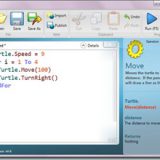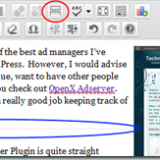Using Lean-Agile Principles to Manage Your Family Tasks

With the weather changing, and spring just around the corner, thoughts in this household turned to vegetables. Specifically, the vegetable garden outside and the seed purchased at WalMart the week before.
A couple of years ago, we bought some lumber to turn our hilly backyard into Grocery Row Gardens. We planted some trees, some fruit, our first shot at potatoes, and we got a lot of beans and peas. That’s after all the building, the soil we trekked in.
The second and third years haven’t been so hot, so we’ve been thinking about getting more soil, fixing our well’s pump, and the assorted things that go with it– which led us to evaluate all the financial needs in the house. The question from my lovely wife: Can you help me prioritize what we should do?
She started listing all the different things in our home’s different areas, and my training as a leader in software development management picked up the idea that I should be using things “PI Planning” and “Agile” to solve this problem. It could also be that I’m starting quarterly planning now for Q2 at work, and Q3 is in my mind.
Create the Backlog
In my business, the Product Manager will come up with a list of improvements for the platform that we’re on. That list will be prioritized and isn’t necessarily at the detail level, but the high-level items that he’s taken the time to figure out would provide the most for the team and the company.
So, I whipped out my notes app and started to make a list of the items that she had on the list that we needed to buy or accomplish. Getting a list of everything as you’re thinking it all through is crucial– but give yourself time, because it might be that more things come up as you go through your day, so keep your list handy.
Rank the Backlog
Next comes the prioritization. Based on what the Product Manager finds on the market, the competitive research, and what’s available, he comes up with a ranking of what’s most important for the product and the order in which he would like to see things done. This is a wish list that will be turned over to Product Development to see what could be done, who would work on it, and for scheduling.
At this point, it’s best to get together with the family and start to talk through the items with an eye for what would make the most sense. Does fixing the car make more sense than fixing the well pump? Does the garden outrank building a tree house? When would you get to these features if you don’t do it now? Never?
Size the Ranked Backlog
After the epics are ranked, the development team heads back to their areas to start breaking down the overall tasks into various epics. They also decide teams will have to play apart. Once that’s identified, a basic sizing of all the different epics has to happen– not in explicit detail, but an overall view of how much items will cost to produce.
For the family, just like in the business, there are two vectors to account for– time and money. Most of the bigger items you’ll be planning for revolve around money, so that’s the vector that you’ll probably want to figure out first. You’re not really going to start calling up stores or doing a lot of shopping online– unless you have no idea what something will cost. What you’re trying to do is get a basic feel of whether it’s a big thing (like buying a new car) or a small thing (like fixing the toilet paper dispenser in the bathroom). And whether there are pieces of bigger items that you can break into pieces.
An example of this would be that you need to buy Suzy a bed– which breaks down to frame, mattress, boxspring, and bedding. Do you have any of these things? Can you do some because you’re upgrading?
These are the questions you’ll want to have here.
Choose the Winners
After everything’s defined, sized, and come to a certain level of detail, everyone comes back together to review and make final selections. Having the number of available hours, amount of money, and priorities, the group then decides the secondary-level objectives that can be effectively worked in the quarter. There can be some horse trading and further definition of things, but during one day-long meeting, everyone decides what to commit to and then they set it in stone.
In a family meeting, everyone can voice what they’d like to do, but the parents should be setting the goals and picking the order of things. This is the most emotionally hard part of the process because here is where a decision has to be made to be carried out– and it’s a whole lot easier to wing it than it is to make the decision not to have that garden or that vacation.
The important point is for everyone to have buy-in here. While there may need to be a decision-maker in the end, the point here is to get everything out on the table, follow the priorities, and the different portions of it, and get everyone to agree at the end with the plan. You’ll be calling back to it as you make decisions throughout the quarter to make sure things align with your goals and plans. That’s not to say that things can’t change– you get a windfall from your tax return, someone gives you a gift, etc.– but you should be sticking with the plan.
Execute!
The quarter starts, everything’s well defined, you start breaking the epics into stories and sprints, and get to work! Our company has two-week sprints, and we’re constantly talking between Product Development and Product Management to make sure that anything that comes up is covered as well as working toward our goal. Because we’ve agreed on priorities and dates, we can communicate with customers well about what we’re doing and delivery expectations, and we should have buffered time in. If things go really well, we can get other things from the list done in the time!
As a family, this is the part where you make things work. Planning on a weekly plan– maybe on a Saturday or Sunday night, and maybe it’s date night! In any case, you’ll want to have your regular activities as well as those tasks that take time or need certain weather in order to work them. Vacations, hikes, etc. you’ll want to either reserve them after the winners are chosen or do it during the quarter. Once money becomes available for the purchases, you’ll want to buy the best price– so make sure that you’re doing your research beforehand!
Evaluate the Results
After every sprint, development teams will review what was done in a sprint. They’ll see what worked and what didn’t, and adapt their process to take those things into account. At the end of the quarter, everything should be done. If it didn’t get done, then it will need to be reviewed and you’ll commit to doing a better job the next time!
As a family, track the money that you’re spending and journal the different things that you did. An easy way to journal is by using your phone camera! You could put together a photo book or slide show pretty easily, and you could keep track of all you did. Did you get everything done? Terrific! If not, plan to do better the next time.











